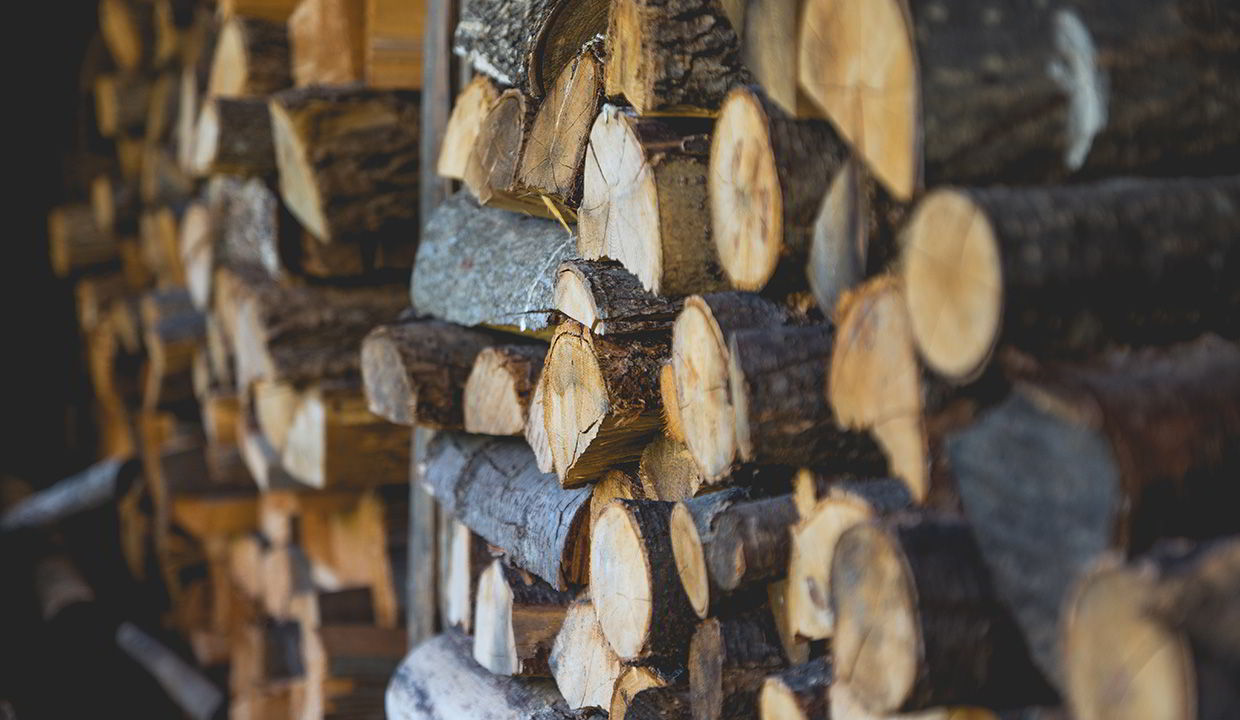Green wood
Wood, which has recently been cut and is still full of sap and water is known as “green wood”. Green wood will generally burn poorly and inefficiently, because it can have from 50% water (for example: Ash) to as much as 140% water (for example: Elm) in its cells. It may be hard to light, smoulder, not put out any heat and cause more than the usual amount of creosote to build up in your chimney.
So your aim should be to dry the wood out to below 25% moisture content, this process is called seasoning. As the name implies, you should store your wood for a season or so, while it dries, but there are things you can do to speed up seasoning by cutting the wood now rather than just before you use it.
Wood is composed of bundles of microscopic tubes that were used to transport water from the roots of the tree to the leaves. These tubes will stay full of water for years even after a tree is dead. This is why it is so important to have your firewood cut to length for 6 months or more before you burn it, it gives the water a chance to evaporate since the tube ends are finally open and the water only has to migrate a foot or two to escape. Splitting the wood helps too by exposing more surface area to the sun and wind, but cutting the wood to shorter lengths is of primary importance.
Here’s how you can tell whether your wood is ready or not: Well-seasoned firewood generally has darkened ends with cracks or splits visible, it is relatively lightweight, and makes a clear ‘clunk’ when two pieces are beat together. Green wood on the other hand is very heavy, the ends look fresher, and it tends to make a dull ‘thud’ when struck.
Another thing you can do to help is store your wood properly. Store it off the ground by building the pile on some longer logs (or whatever method you can devise). A shed or shelter with an open side makes an ideal storage place, as the air can circulate around the logs and help to dry them out. Unventilated spaces or plastic tarps, which never get taken off will prevent the drying and evaporation process and cause moulds and rot. So, if a tarp is your only option, take it off frequently to air the wood on fine days. And remember to put it back on again. Seasoned firewood will reabsorb large amounts of water if exposed to rain, snow and excessive dew, which is liable to make it rot and be unfit for making a good fire.
When you build up a store of firewood, remember that the wood may start to deteriorate after 4 to 5 years, although this is of course variable and depending on storage conditions and species involved.
Pre seasoned and kiln dried wood
Wood can be bought pre seasoned but check its authenticity before buying. High quality kiln dried hard wood and kindling is available from a variety of specialists in the supply of fire wood. If the wood is guaranteed for immediate use it should deliver excellent performance.

